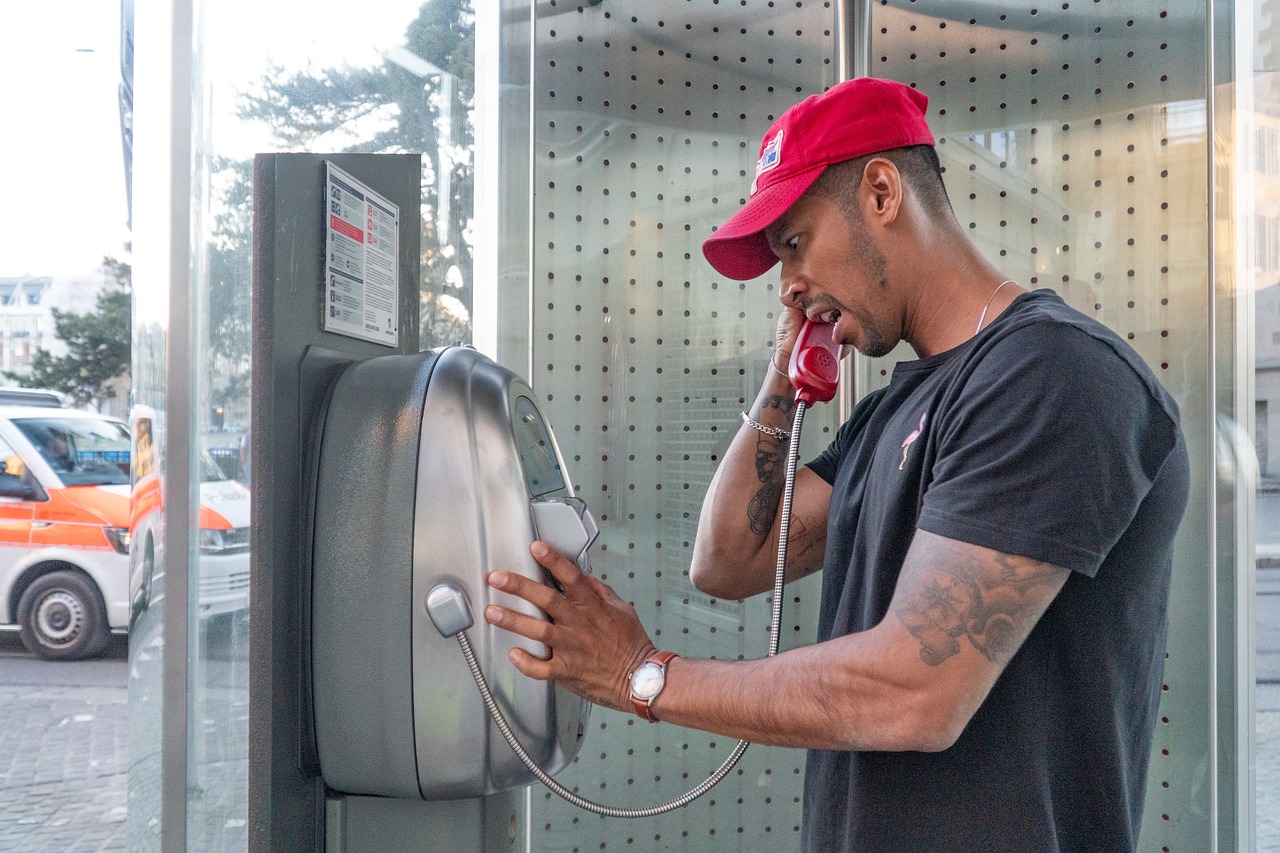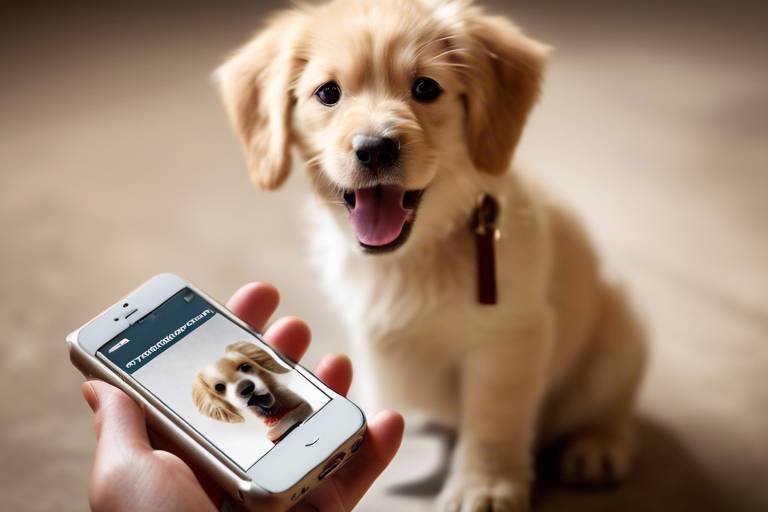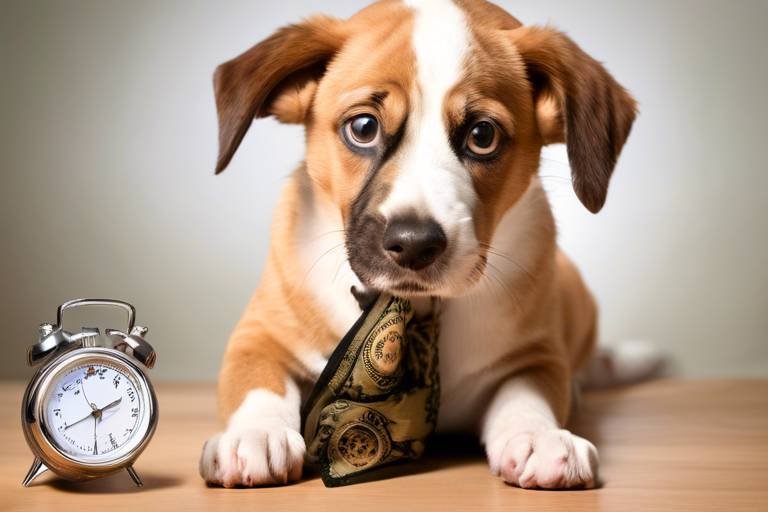The Importance of Emergency Contacts for Pet Safety
When it comes to our beloved pets, ensuring their safety during emergencies is a top priority for every pet owner. Just like we prepare for unexpected situations in our lives, we must also have a solid plan in place for our furry friends. This is where the concept of emergency contacts becomes crucial. Imagine a scenario where you need to rush your pet to the vet, but you're stuck in traffic or, worse, unable to get to them. Having a reliable network of emergency contacts can be the difference between panic and peace of mind. By knowing who to call and having a clear plan, you can ensure that your pet receives the care they need promptly. So, let’s dive into why these contacts are so important and how you can set up an effective strategy for your pet's safety.
Emergency contacts are individuals who can be reached quickly in a crisis, and they play a significant role in your pet’s safety and care during unforeseen situations. Think of them as your pet's safety net. In a world where anything can happen—be it a natural disaster, an unexpected injury, or a sudden illness—having a list of trustworthy contacts can provide you with the reassurance that your pet will be looked after, even if you are not around. It's not just about having names and numbers; it's about ensuring that these contacts are informed and prepared to step in when needed. This preparation can make a world of difference in your pet's well-being.
Selecting appropriate emergency contacts involves careful consideration. You want to choose reliable friends, family, or pet care professionals who can assist in a crisis. It's essential to select people who are familiar with your pet's needs and behaviors. After all, your pet's safety is at stake! Here are some key categories to consider:
- Family and Friends: Close family members and friends can provide immediate assistance in emergencies. Make sure they are aware of your pet's health issues and care routines for effective decision-making.
- Pet Caregivers: Pet sitters or dog walkers should also be included in your emergency contacts. They often know your pet well and can provide comfort and care if needed.
- Veterinary Contacts: Including your veterinarian in your emergency contacts is crucial. They can provide immediate medical advice and treatment options if your pet requires urgent care during an emergency.
Developing a comprehensive emergency plan ensures everyone knows their role in a crisis. This plan should include evacuation routes, safe locations, and how to contact each person involved. A well-thought-out plan can help you avoid chaos when every second counts. Make sure to communicate this plan clearly to all your contacts, so they are on the same page. You might even consider creating a simple table that outlines each person's responsibilities, along with their contact information:
| Name | Relationship | Contact Number | Role in Emergency |
|---|---|---|---|
| Jane Doe | Friend | (555) 123-4567 | Pet Care |
| John Smith | Family | (555) 987-6543 | Transport to Vet |
| Dr. Brown | Veterinarian | (555) 555-5555 | Medical Advice |
Effective communication with your emergency contacts is vital. Make sure they understand their responsibilities and have access to your pet's medical history and care instructions. This preparation can ease their minds and make them feel confident in their ability to help. Consider having a dedicated folder—either digital or physical—that contains all the essential information, including:
- Your pet's medical records
- Emergency vet contact information
- Detailed care instructions
- Behavioral traits and quirks
Lastly, regularly updating your emergency contacts is necessary to reflect any changes in your pet's health or care routine. Just like we update our own emergency contacts, it's essential to keep this list fresh and relevant. Make it a habit to review your contacts every few months or after any significant changes in your pet's life, such as a new health issue or change in caregivers. This simple step can ensure that your contacts are always prepared for any situation.
In conclusion, establishing and maintaining a reliable network of emergency contacts is vital for pet safety. Being prepared can significantly impact your pet's well-being during unexpected events. Remember, it's not just about having a list of names and numbers; it's about ensuring that these individuals are informed and ready to act when the time comes. So take the time to create your emergency contact plan today and give yourself the peace of mind that comes with knowing your furry friend is safe, no matter what life throws your way.
Q: How many emergency contacts should I have?
A: Ideally, you should have at least three to five reliable contacts who are familiar with your pet's needs.
Q: What information should I share with my emergency contacts?
A: Share your pet's medical history, care instructions, and any specific behavioral traits they should know about.
Q: How often should I update my emergency contacts?
A: Review and update your emergency contacts every few months or after any significant changes in your pet's life.

Understanding Emergency Contacts
When it comes to our furry companions, their safety is often our top priority. But have you ever thought about what happens in a crisis? This is where emergency contacts come into play. These are the individuals who can be reached quickly during unforeseen situations, and knowing who to call can make a significant difference in your pet’s safety and care. Imagine you're caught in a sudden storm, or maybe a family emergency arises—who would you trust to step in and care for your beloved pet?
Emergency contacts are not just random names; they should be people who understand your pet's unique needs and can act swiftly when required. This could be a neighbor who has watched your pet while you've been away, a family member who adores your furry friend, or even a trusted pet care professional. The key is to ensure that these contacts are readily available and willing to help in times of need.
To further illustrate the importance of emergency contacts, consider the following scenarios:
- Medical Emergencies: What if your pet suddenly falls ill? Having a reliable contact who knows your pet’s health issues can facilitate quicker decisions regarding veterinary care.
- Evacuation Situations: In the event of a natural disaster, you may need to evacuate your home. Your emergency contacts should be aware of your evacuation plan and be ready to assist with transporting your pet.
- Unexpected Absences: Life can throw curveballs, like a last-minute work trip. Knowing that someone you trust can step in to care for your pet provides peace of mind.
In summary, understanding who your emergency contacts are and ensuring they are equipped with the necessary information about your pet can be a lifesaver. This preparation not only enhances your pet’s safety but also alleviates stress during emergencies. So, take a moment to think about who you would call in a crisis and make sure they are ready to help!

Choosing the Right Contacts
When it comes to ensuring the safety of your beloved pet during emergencies, is absolutely vital. Think of these contacts as your pet's lifeline when you can't be there. It's not just about picking random names from your phone book; it involves careful consideration of individuals who are not only reliable but also familiar with your pet's unique needs. After all, in a crisis, you want someone who can act quickly and effectively on your pet's behalf.
Start by considering your family and friends. These are the people who know you and your pet the best. They can provide immediate assistance when time is of the essence. However, it’s important to ensure that they are well-informed about your pet’s health issues, dietary restrictions, and care routines. For example, if your dog has a specific allergy or your cat requires medication at certain times, make sure your contacts are aware of these details. The more they know, the better equipped they will be to make decisions that align with your pet’s needs.
Next, think about including pet caregivers in your emergency contact list. This could be your pet sitter, dog walker, or even a trusted neighbor who has experience with your furry friend. These individuals often have a close relationship with your pet and can provide comfort and care during a stressful time. They are also likely to be familiar with your pet's behavior, which can help in calming them down if they are anxious or scared. Just like you wouldn’t want a stranger caring for your child in an emergency, the same goes for your pet.
Another crucial contact to consider is your veterinarian. In the event of an emergency, having your vet's contact information easily accessible can be a game-changer. They can provide immediate medical advice and treatment options, which can be critical if your pet is injured or unwell. Ensure that your emergency contacts know how to reach your vet and have a basic understanding of your pet’s medical history. This way, they can relay important information quickly and accurately.
In summary, choosing the right contacts for your pet’s emergency plan is not just a task; it’s a responsibility. It requires thoughtful consideration of who can step in and provide the necessary care and support. By selecting family, friends, pet caregivers, and veterinary contacts who are well-informed about your pet’s needs, you can ensure that your furry companion is in good hands when it matters most.
- How many emergency contacts should I have? Ideally, have at least three reliable contacts who can step in if needed.
- What information should I share with my emergency contacts? Provide them with your pet's medical history, dietary needs, and any behavioral quirks.
- Should I inform my emergency contacts about my pet's routine? Yes! The more they know about your pet's daily routine, the better they can care for them in your absence.
Family and Friends
When it comes to ensuring the safety of our beloved pets, having a reliable network of is absolutely essential. These are the people who can step in when you’re not around, providing immediate assistance in times of need. Imagine being stuck in traffic during a sudden emergency; knowing that a trusted friend or family member can rush to your home to take care of your furry companion can provide immense peace of mind. It’s like having a safety net that can catch you when you fall.
However, it’s not just about picking anyone from your contact list. You want to choose individuals who are not only reliable but also familiar with your pet’s unique needs. For instance, if your dog has a particular fear of thunderstorms, it’s crucial that the person you designate as an emergency contact understands this and can provide the necessary comfort and care. This familiarity can make all the difference in your pet’s emotional well-being during stressful times.
Here are a few things to consider when selecting family and friends as your emergency contacts:
- Awareness of Health Issues: Make sure your contacts know about any health problems your pet may have. This could be anything from allergies to chronic conditions.
- Care Instructions: Provide clear instructions on how to care for your pet, including feeding schedules, favorite toys, and any special needs.
- Availability: Choose people who are likely to be available when you need them. It's wise to have multiple contacts in case one is unreachable.
Moreover, it’s beneficial to have an open line of communication with your chosen contacts. Regularly discuss your pet’s needs with them and ensure they feel comfortable stepping in. This not only prepares them for emergencies but also strengthens your support network. Just like a well-oiled machine, the more everyone knows their role, the smoother things will go in a crisis.
In summary, the role of family and friends in your pet's emergency plan cannot be overstated. They are your first line of defense, providing immediate care and comfort. By choosing the right people and keeping them informed, you create a safety net that ensures your pet remains safe and secure, no matter what life throws your way. So, take the time to reach out, educate, and prepare your loved ones—they’ll appreciate being included, and your pet will thank you for it!
Q: How many emergency contacts should I have for my pet?
A: It's advisable to have at least three emergency contacts. This ensures that if one person is unavailable, you still have others who can step in.
Q: What information should I provide to my emergency contacts?
A: Share your pet's medical history, dietary needs, behavioral quirks, and any specific instructions for care. This will help your contacts make informed decisions in your absence.
Q: Should I inform my emergency contacts about my pet's fears?
A: Absolutely! Informing your contacts about your pet's fears—like thunder or strangers—can help them provide the necessary comfort and support during stressful situations.
Q: How often should I update my emergency contacts?
A: Regularly review and update your emergency contacts, especially if there are changes in your pet's health or care routine. This ensures that your contacts are always prepared.
Pet Caregivers
When it comes to ensuring the safety and well-being of our beloved pets, play an essential role that often goes unnoticed until an emergency strikes. These individuals, including pet sitters, dog walkers, and boarding facility staff, are not just hired help; they are trusted allies in your pet's life. They know your furry friend’s habits, preferences, and quirks, making them invaluable in a crisis.
Imagine being caught in a sudden emergency—perhaps a natural disaster or an unexpected health issue. In such moments, having a reliable pet caregiver on speed dial can be a game changer. They can step in swiftly to provide care, comfort, and stability when you can’t be there. This is why it’s crucial to select caregivers who are not only experienced but also familiar with your pet's specific needs.
Moreover, it's important to ensure that your pet caregivers are included in your emergency contacts. This means they should be well-informed about your pet’s health history, dietary restrictions, and any behavioral traits that might come into play during a stressful situation. For instance, if your pet is shy or anxious, a caregiver who understands these traits can help mitigate potential issues. Here are some key points to consider:
- Familiarity: Choose caregivers who have spent time with your pet and understand their routine.
- Communication: Ensure they know how to reach you and other emergency contacts.
- Preparedness: Provide them with crucial information about your pet’s medical history and any medications they may need.
Additionally, it’s wise to conduct a brief training session with your caregiver, where you can go over your pet's care routine, emergency procedures, and any specific commands your pet responds to. This preparation can make all the difference in a stressful situation. Remember, a well-prepared caregiver can act as your pet's advocate when you are not around, ensuring they receive the best possible care in your absence.
In conclusion, pet caregivers are more than just a convenience; they are a vital part of your pet's support system. By including them in your emergency plan and keeping them informed, you are taking a significant step toward ensuring your pet's safety and well-being during unforeseen circumstances.
Q1: How do I choose the right pet caregiver?
A1: Look for caregivers with experience, positive reviews, and familiarity with your pet's specific needs. A meet-and-greet can help assess compatibility.
Q2: What information should I provide to my pet caregiver?
A2: Share your pet's health records, dietary needs, behavioral traits, and emergency contact information to ensure they are well-prepared.
Q3: How often should I update my pet caregiver about my pet's health?
A3: Regular updates are essential, especially after vet visits or if there are changes in your pet's health or routine. Aim to communicate any changes promptly.
Q4: Can I rely on my pet caregiver during an emergency?
A4: Yes, if they are well-informed and prepared, pet caregivers can provide vital support and care for your pet during emergencies.
Veterinary Contacts
When it comes to your pet's safety, having your veterinarian as part of your emergency contacts is absolutely crucial. Imagine being in a panic during a crisis, and the first thought you have is about your furry friend’s health. Your vet can provide immediate medical advice and treatment options, which can be the difference between a minor issue and a major crisis. They know your pet’s medical history, any pre-existing conditions, and can guide you through the steps you need to take.
It's not just about having a phone number saved in your contacts; it's about establishing a relationship with your veterinarian. Make sure to inform them about any changes in your pet's health or behavior, as this information can be vital during emergencies. Additionally, ensure that your vet has your most recent contact information, so they can reach you quickly if needed.
Here are some key points to consider when including your veterinarian in your emergency contacts:
- Accessibility: Ensure your vet's office is reachable 24/7, or know the location of an emergency veterinary clinic nearby.
- Medical History: Keep a copy of your pet's medical records, including vaccination history and any ongoing treatments, readily available.
- Communication: Let your emergency contacts know how to reach your vet and what information they may need to provide.
In a nutshell, having your veterinary contact organized and accessible can alleviate stress during emergencies. It’s like having a lifeline in a storm; knowing that you have a trusted professional on your side can provide peace of mind when you need it most.
Q: Why is it important to have a veterinary contact in my emergency plan?
A: Your veterinarian can provide immediate medical advice and treatment options, ensuring your pet receives the best care possible during a crisis.
Q: How often should I update my pet's medical records?
A: You should update your pet's medical records every time they have a vet visit or experience a change in health status. Regular updates ensure your emergency contacts are informed.
Q: What should I do if my veterinarian is unavailable during an emergency?
A: Have a list of alternative veterinary clinics or emergency animal hospitals that you can contact if your primary vet is unavailable.
Q: How can I ensure my emergency contacts know about my pet’s needs?
A: Share detailed information about your pet’s health history, behavioral traits, and care instructions with your emergency contacts, so they can make informed decisions on your behalf.
Creating an Emergency Plan
When it comes to ensuring the safety of our beloved pets during unforeseen situations, having a well-thought-out emergency plan is non-negotiable. Just like we prepare for natural disasters or unexpected events in our lives, our furry friends deserve the same level of consideration. An emergency plan is essentially a roadmap that outlines what to do when the unexpected happens, and it should be tailored specifically to your pet's needs. Think of it as a safety net that can catch you and your pet when life throws a curveball.
The first step in creating an effective emergency plan is to identify potential risks and scenarios that could affect your pet. This could range from natural disasters like hurricanes and floods to sudden medical emergencies. Once you have a clear picture of possible situations, you can start to outline specific actions to take. For example, if you live in an area prone to flooding, your plan should include evacuation routes and safe locations that accept pets. It’s crucial to have this information readily available, so consider printing it out and keeping it in a visible spot.
Next, you should designate roles for each member of your household. Who will be responsible for grabbing the pet's emergency kit? Who will ensure that the pets are safely loaded into the car? Having clear responsibilities can eliminate confusion during a stressful time. You might even want to practice your emergency plan with your family, simulating different scenarios to see how everyone responds. This practice will not only prepare you for a real emergency but also help your pets get accustomed to the process.
Speaking of emergency kits, don’t forget to assemble one that includes all the essentials your pet might need. This kit should contain items like food, water, medications, a first-aid kit, and any comfort items that can help soothe your pet during stressful situations. You can create a checklist to ensure you have everything covered:
- Food and water for at least three days
- Medications and medical records
- Leash, collar, and ID tags
- Comfort items like blankets or toys
- First-aid supplies
Additionally, make sure your pet is microchipped and that their identification tags are up-to-date. In the chaos of an emergency, pets can easily get lost, and having a reliable form of identification can make all the difference in reuniting you with your furry friend.
Finally, remember that communication is key. Share your emergency plan with your emergency contacts and ensure they know their roles as well. This way, if you’re unable to reach your pet during an emergency, your contacts will be prepared to step in and help. It's a community effort to ensure the safety of our pets, and by working together, we can create a robust support system.
In summary, creating an emergency plan for your pet is about being proactive rather than reactive. By taking the time to think through potential emergencies and preparing accordingly, you can provide peace of mind for both yourself and your pet. Remember, it’s not just about having a plan; it’s about making sure that plan is effective and ready to be put into action when it matters most.
Q: What should I include in my pet's emergency kit?
A: Your pet's emergency kit should include food, water, medications, a first-aid kit, leash, collar, ID tags, and comfort items like blankets or toys.
Q: How can I ensure my pet is safe during a natural disaster?
A: Create a comprehensive emergency plan that includes evacuation routes, safe locations, and a designated emergency contact who can help if you're not available.
Q: Is it necessary to microchip my pet?
A: Yes! Microchipping your pet provides a reliable form of identification that can help reunite you with your pet in case they get lost during an emergency.

Communicating with Contacts
Effective communication with your emergency contacts is not just a good idea; it's an absolute necessity. Imagine a scenario where your furry friend is in distress, and you need someone to step in quickly. The last thing you want is for your contacts to be caught off guard or unsure of what to do. Therefore, it’s crucial to ensure that your chosen contacts are not only aware of their responsibilities but also have the information they need to act swiftly and efficiently.
Start by having a candid conversation with your emergency contacts. Share your concerns and explain why their role is so important. It’s one thing to have someone listed as an emergency contact, but quite another for them to understand the gravity of the situation. Make sure they know your pet’s personality, any specific health issues, and what they should do in various scenarios. For example, if your pet is prone to anxiety during thunderstorms, let them know how to keep your pet calm. This kind of insight can be invaluable in a crisis.
Moreover, it’s essential to provide your emergency contacts with your pet's medical history and care instructions. This information can be shared in a simple document or a digital format that’s easy to access. Consider including details such as:
- Your pet’s vaccination records
- Allergies or medical conditions
- Preferred food and feeding schedule
- Emergency vet contact information
In addition to sharing this vital information, regular check-ins with your contacts are a great way to ensure everyone is on the same page. Life happens, and circumstances change; your contacts might move, change their phone numbers, or even become unavailable. By establishing a routine for updates, you can ensure that your emergency plan remains relevant and effective.
Lastly, don’t forget to utilize technology to your advantage. There are numerous apps and tools available that can help you keep your emergency contact information organized and accessible. For instance, you can create a shared document that everyone involved can edit and view, or use a dedicated pet care app that stores all necessary information in one place. By harnessing the power of technology, you can simplify communication and ensure that your contacts have the latest information at their fingertips.
| Question | Answer |
|---|---|
| How often should I update my emergency contacts? | It's best to review and update your emergency contacts every six months or whenever there are significant changes in your pet's health or care routine. |
| What information should I share with my emergency contacts? | Share your pet's medical history, behavioral traits, feeding schedules, and emergency vet contact information to ensure they can make informed decisions. |
| Can I use technology to manage my emergency contacts? | Yes! Consider using shared documents or pet care apps to keep your emergency contact information organized and easily accessible. |
Sharing Important Information
When it comes to ensuring your pet's safety during emergencies, with your emergency contacts is absolutely crucial. Imagine being in a situation where every second counts, and your chosen contacts are left in the dark about your pet's specific needs. It’s a bit like trying to assemble a puzzle without knowing what the final picture should look like; it can lead to confusion and delays that could have serious consequences.
To avoid such scenarios, consider providing your emergency contacts with a detailed overview of your pet’s health records, dietary restrictions, and any behavioral quirks they should be aware of. This information acts like a roadmap, guiding your contacts on how best to care for your furry friend in your absence. Here’s a quick checklist of what to share:
- Health Records: Include vaccination history, allergies, and any chronic conditions.
- Dietary Needs: Specify any special diets or feeding schedules.
- Behavioral Traits: Share any quirks or fears your pet may have that could affect their behavior in stressful situations.
- Emergency Procedures: Outline what to do in case of specific emergencies, like a sudden illness or injury.
Additionally, consider creating a pet profile document that can be easily accessed by your emergency contacts. This profile can be a simple one-page summary that includes all the essential information mentioned above, along with your pet's favorite toys, routines, and any other details that can help keep them calm and comforted. You could even keep this document in a shared location, like a cloud storage service, so that your contacts can access it anytime.
Moreover, regular communication with your emergency contacts is vital. Make it a habit to check in with them periodically, updating them on any changes in your pet’s health or routine. This proactive approach ensures that everyone is on the same page and ready to act swiftly when needed. Remember, in emergencies, clarity and preparedness can make all the difference in how your pet is cared for.
- What should I include in my pet's emergency profile?
Include health records, dietary needs, behavioral traits, and emergency procedures. - How often should I update my emergency contacts?
Regularly, especially after any changes in your pet's health or care routine. - Can I share my pet's information digitally?
Yes, using cloud storage or shared documents is a great way to keep information accessible.
Regular Updates
Regular updates to your emergency contacts are not just a good idea; they are essential for ensuring that your pet receives the best care possible in times of crisis. Think of it like keeping your GPS navigation system updated. Just as outdated maps can lead you astray, outdated contact information can prevent your pet from getting the help they need when it matters most. It's easy to overlook this task, but taking a few moments to review and refresh your emergency contact list can make a world of difference.
Start by setting a reminder every few months to check in with your contacts. This could be as simple as sending a quick text or email to confirm their availability and willingness to help in an emergency. Make sure they are still comfortable with their role and that their contact information is accurate. You might find that a friend has moved or that a pet sitter has changed their phone number. Keeping this information current ensures that in a moment of panic, you won't be scrambling to find someone who is unreachable.
Additionally, consider any changes in your pet's health or behavior. If your pet has developed new medical conditions or needs special care, it's vital to communicate this to your emergency contacts. For example, if your dog is now on medication for anxiety, your contacts should be informed about how to administer it or recognize signs of distress. This way, they can act swiftly and effectively, ensuring your furry friend remains calm and comfortable.
Moreover, you can enhance your emergency preparation by creating a simple table that outlines important information about your pet. This can include:
| Information Type | Details |
|---|---|
| Pet's Name | [Your Pet's Name] |
| Medical Conditions | [List any conditions] |
| Medications | [List any medications] |
| Emergency Veterinarian | [Vet's Name & Contact] |
| Behavioral Traits | [Any behavioral notes] |
By keeping this table updated and sharing it with your emergency contacts, you equip them with the necessary information to make informed decisions on your pet's behalf. Remember, your pet's safety is a team effort, and communication is key. Regular updates not only keep your contacts informed but also reinforce the importance of their role in your pet's life.
- How often should I update my emergency contacts? It's advisable to review and update your emergency contacts every few months or whenever there are significant changes in your pet's health or care routine.
- What information should I share with my emergency contacts? Share essential details such as your pet's medical conditions, medications, behavioral traits, and contact information for your veterinarian.
- Can I have too many emergency contacts? While it's important to have reliable contacts, too many can lead to confusion. Aim for a small group of trusted individuals who are familiar with your pet.

Conclusion
In conclusion, establishing and maintaining a reliable network of emergency contacts is vital for pet safety. Just like how we wouldn’t venture into the wilderness without a map, navigating emergencies without a solid plan for our furry friends can lead to unnecessary stress and potential harm. By preparing ahead of time, you not only safeguard your pet's well-being but also create a sense of peace for yourself. Imagine the comfort of knowing that if something goes awry, there are trusted individuals ready to step in and provide care. This preparation can make a world of difference in those critical moments.
The importance of having a structured emergency plan cannot be overstated. It’s not just about having a list of names; it’s about ensuring that each person understands their role and responsibilities. When your emergency contacts are well-informed about your pet's health, behaviors, and preferences, they can make quicker, more effective decisions. This can be the difference between a minor hiccup and a major crisis.
Moreover, regular communication and updates with your emergency contacts are crucial. Pets can change over time, whether it’s due to health conditions or behavioral quirks. Keeping your contacts in the loop ensures they are always prepared to act in your pet's best interest. So, take a moment to review your list of emergency contacts and ensure they are up to date.
Ultimately, being proactive about your pet’s safety not only enhances their quality of life but also strengthens the bond between you and your furry companion. Remember, your pet relies on you for their safety and happiness. By taking these steps, you’re not just a pet owner; you’re a responsible guardian.
- Why is it important to have emergency contacts for my pet?
Having emergency contacts ensures that your pet receives immediate care and attention in unforeseen situations, reducing stress and potential harm. - Who should I include as emergency contacts?
Include family members, close friends, pet caregivers, and your veterinarian who are familiar with your pet's needs and can act quickly in an emergency. - How often should I update my emergency contacts?
It's essential to review and update your emergency contacts regularly, especially after any changes in your pet's health or care routine. - What information should I share with my emergency contacts?
Provide your contacts with your pet's medical history, care instructions, and any behavioral traits that may be relevant during an emergency.
Frequently Asked Questions
- Why are emergency contacts important for pet safety?
Emergency contacts are crucial because they provide immediate assistance and support for your pet during unforeseen situations. Having reliable individuals who understand your pet's needs can make all the difference in ensuring their safety and well-being when you can't be there.
- Who should I include as emergency contacts?
It's best to include a mix of family members, close friends, and trusted pet caregivers. Choose people who are familiar with your pet's personality, health issues, and care routine. This way, they can make informed decisions and provide the necessary support in a crisis.
- How can I effectively communicate with my emergency contacts?
Communication is key! Make sure your emergency contacts are aware of their roles and responsibilities. Share your pet's medical history, care instructions, and any special needs they may have. Regularly check in with them to ensure they are up-to-date and ready to help if needed.
- What information should I share with my emergency contacts?
Provide essential information such as your pet's health records, allergies, medications, and behavioral traits. This information helps your contacts make informed decisions about your pet's care in your absence.
- How often should I update my emergency contacts?
It's important to review and update your emergency contacts regularly, especially if there are changes in your pet's health, care routine, or if your contacts' availability changes. Keeping this information current ensures that your pet is always in good hands.
- What should I do if my emergency contacts are unavailable?
If your primary emergency contacts are unavailable, having backup contacts is essential. Make a list of additional friends, family members, or pet care professionals who can step in when needed. The more prepared you are, the better your pet will be cared for in an emergency.


















